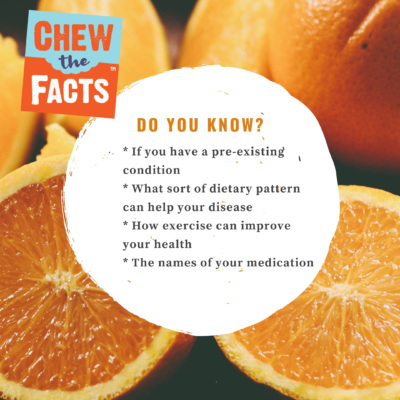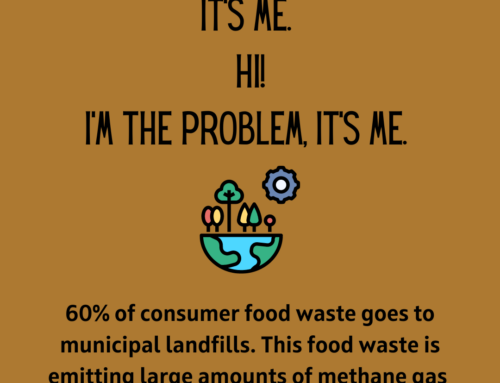The times we are living in have been eye opening in many ways. It’s got me thinking about public health education. As someone who was trained in the 1980s, and worked in outpatient clinics, health education was the groundwork of prevention care at that time. It seems that we’ve gotten away from educating the public about basic disease prevention practices.
What is a pre-existing condition? Click To Tweet

Pre-Existing Conditions
It’s important that people understand what pre-existing condition means in terms of health risk. Everyone should have a basic awareness of how a condition impacts their risk for other disease and for complications.This is not just important now, but going forward for regular maintenance and control of a health condition.
For instance, if you have diabetes, you are automatically at greater risk for heart disease than those who don’t have it. The same goes for hypertension (or high blood pressure). If you have high blood pressure, you are at greater risk of heart disease and kidney disease than someone with normal blood pressure.
Your diagnosis may require medication. However, even if you take your medication exactly as prescribed by your doctor (which you should be), the medication doesn’t cure or erase the condition. Some people can control blood pressure with medication, diet and exercise, and have better control over their blood pressure and reduce their risk of complications. However others may have a more difficult time managing it if they have other conditions or struggle with weight management.
It’s important to note that in the “Guidelines for Opening Up of America Again”, the CDC recommends that ALL vulnerable individuals should continue to shelter in place through Phase I and II.
Talk to your doctor about your pre-existing conditions and how vulnerable you are. Everyone with a pre-existing condition does not have the same risk.
What You Eat
You’ve likely heard that “diet and exercise” are an important strategy to good health. Just like hand-washing helps reduce the spread of germs and disease, diet and exercise really can have an impact on your health and disease management.
Having high blood pressure is a risk factor for COVID19 complications. But having a diagnosis doesn’t mean you can’t work on controlling your risk. Remember, just because you’re on medication doesn’t mean you can eat whatever you want. Your diet will also impact your blood pressure control (and your blood sugar control if you have diabetes).
What is a “healthy diet”? It’s a diet rich in plant foods, low in saturated fat, moderate in sodium, and low in sugar. This can include the DASH diet, Mediterranean diet, a vegetarian or vegan diet. As a big fan of the DASH Diet, I know it’s effective for people with high blood pressure and/or heart disease. It can also be appropriate for a person with diabetes. If you have diabetes, a diet with a lower glycemic effect helps you control blood sugar levels.
A Public Health Approach
The basic principles of public health involve defining the problem, identifying risk and protective factors, then developing prevention strategies. Every disease has a set of strategies to do just this. Perhaps we have been so caught up in a “universal healthcare” approach in the US, that we have allowed some of the basic principles of public health to fall to the roadside unattended. We haven’t brought enough attention to health education.
Let's invest in empowering people to understand their own health. You can't always control the diagnosis, but you can take action to manage it by modifying behaviors. Click To Tweet
By early to mid April, I was happy to see some great television ads educating the public about how staying home and hand washing reduces the spread of the coronavirus. Everyone now knows what “social distancing” means, and how it can help with reducing infections. Hand-washing seems to be something that many took for granted or overlooked as important to reducing the spread of disease.
Important information can’t be hidden in government websites, but needs to be widely broadcasted. I hope to see more of these types of public service announcements addressing other means to prevention – like annual check ups with your doctor and seeing your dietitian about diet to manage your disease.
Education Resources
Health education is something that should be ongoing. This can be achieved at a federal level through public messaging, and in small group or individual settings with your primary health care providers.
You can reduce chronic disease risk with proper diet, physical activity, and avoidance of tobacco. These three behavioral factors can be modified for better health. Click To Tweet
For instance, when it comes to basic health education about your disease and corresponding diet therapy, a referal to a registered dietitian will help tremendously. Some may think that “people don’t follow diets” or that “people don’t listen to their doctor anyway”. But I beg to differ. Most patients want to learn, and will implement dietary strategies if they can understand them and are provided with the tools that make implementing them easier.
When it comes to medical nutrition therapy, registered dietitians are that person. Dietitians have both the training, skill, and tools to help patients understand both their condition, and the dietary changes required to manage it. A dietitians practice is set up in a way that they have the time to dedicate to learning. Your doctor is responsible for examining you, running necessary tests, and providing a diagnosis. He or she will probably spend some time on health education, but a physician’s practice is not set up to allow for the time needed to really provide effective health education.
This is where public health education system could come in. Nurses, diabetes educators, and dietitians can all work together to help patients understand management of their disease, as well as prevention of other risk factors.
Can a Pandemic Move Health Education Forward?
This pandemic has clearly highlighted the importance of strong public health messaging:
- Social distancing works to reduce the spread of virus
- Regular and proper hand-washing is a proven and effective technique to reduce infection rates
- Avoid touching your face to avoid infection
Increasing consumer awareness of health risks should be a focus moving forward. Not just for this pandemic, but for all disease and disease risk. It’s been clear that pre-existing conditions including diabetes, hypertension, obesity and heart disease, all increase the risk of complication in COVID-19. Hopefully the experiences of a pandemic will move better access and coverage to health education by qualified practitioners.
There is never any guarantee when it comes to your health. Still, there is certain risk to our behaviors, and for the most part, not smoking, not abusing alcohol, eating a fairly healthy diet, getting regular exercise to keep your heart, lungs and muscles strong, and managing stress, are the foundation to lowering disease risk.




